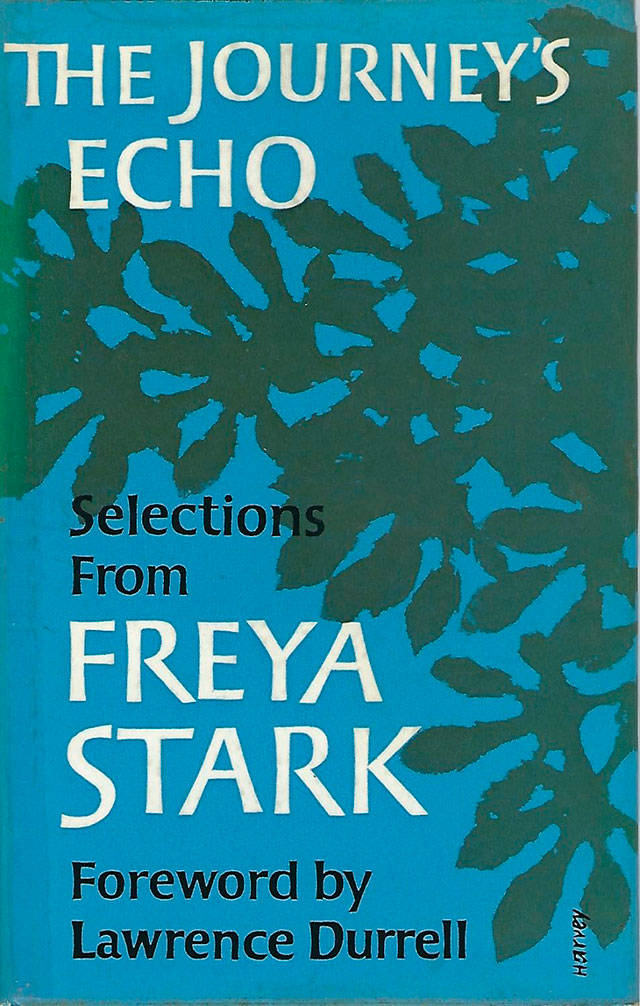Courtesy Photo
Phil Clapham
“To awaken quite alone in a strange town is one of the most pleasant sensations in the world. You are surrounded by adventure. You have no idea of what is in store for you, but you will, if you are wise and know the art of travel, let yourself go on the stream of the unknown and accept whatever comes in the spirit in which the gods may offer it.”
In November 1927, a demure and rather shy 34-year-old woman named Freya Stark boarded a ship in Italy and headed to Beirut. There, she proceeded to venture — often on the back of a donkey — into remote areas of the Middle East that had previously seen few foreigners, and even fewer western women.
Born in 1893, Stark spent much of her childhood in the Italian town of Asolo, near Venice. Captivated by a copy of The Thousand and One Nights that she received for her ninth birthday, she became fascinated with Arabia. Already fluent in English, French and Italian, Stark taught herself Latin, and later studied Arabic and Persian – languages that were essential to her subsequent travels.
It is difficult to fully appreciate the courage which underlay Stark’s journeys at the time she undertook them. At one point in the early 1930s, this remarkably resourceful woman was in all probability the only non-Arab female on the entire Arabian Peninsula. In 1931, she disappeared into Iran, often going quite literally off the beaten track, and was the first westerner to locate the long-fabled Valley of the Assassins. One can only imagine the obstacles she faced in such remote places, and the great curiosity (and surprise!) she must have engendered among locals along the way.
The very best travel books bring other places to life using creative and often lyrical language — and in this, Stark has few equals. Her innumerable observations range from the trivial to the profound. Here, for example, is a throwaway line about camels, which she described as having “a respectable, boarding house look, like some faded neatness that dresses for propriety but never dressed for love.”
More seriously, she often meditates on the ephemeral and vainglorious nature of human achievements. The Phoenician city of Tyre on the coast of what is now Lebanon was founded almost 5,000 years ago and was once a major trading center, known for its monopolistic production of purple dye that was reserved for the use of royalty.
Its storied history was long past when Stark visited, as she noted in the loveliest of language: “Tyre, on her headland, listens to the waves. Her columns are lost or carried away or lie in the sea where they fell broken, and the water, clearer than glass, lisps over them or under, singing an old song learned in the mornings of Time; the causeway built by Alexander is flanked with fields and crops; and the forgetful children of the Phoenicians still build small clumsy boats on the open beaches. There is nothing left in Tyre except this forgetfulness, a life of little things quieter than silence; an essence of oblivion woven with the sun and sea.”
Stark’s years in Arabia gave her considerable familiarity with the nomadic Bedouin, whom she admired for their sense of freedom.
“I thought of civilization,” she wrote, “and of the bedouin who is so happy without it. Perhaps it is because he need never choose the second best. Poor as his best may be, he can follow it when he sees it, and that is freedom. We, too often compelled to see two roads and take the worse one, are by that fact enslaved. Our lesser road may in itself be better than the wild man’s best one, but it is our choice of the second that makes us second-rate. The second-best for security in finance, the second-best for stability in marriage, the second-best for conformity in thought… and every time we consciously accept it our stature is diminished. It would be pleasant, I reflected, to look back on a life that has never given its soul for money, its time to a purpose not believed in, its body to anything but love.”
More than most travel writers, Stark captured the thrill of heading out into the world with no agenda and no time limitations (which I’ve been fortunate to do more than once).
“The beckoning counts,” she wrote, “not the clicking latch behind you. And all through life the actual moment of emancipation still holds that delight, of the whole world coming to meet you like a wave.”
Stark wrote many books, but a good sampler of her writing is The Journey’s Echo. This indomitable woman’s last trip was to Afghanistan in 1968, at the age of 75. She died in Asolo in 1993, a few months after her 100th birthday.
Which books would you take to a desert island, and why? Email me at desertislandbookworm@gmail.com.
Phil Clapham is a retired whale biologist who lives on Maury Island.


